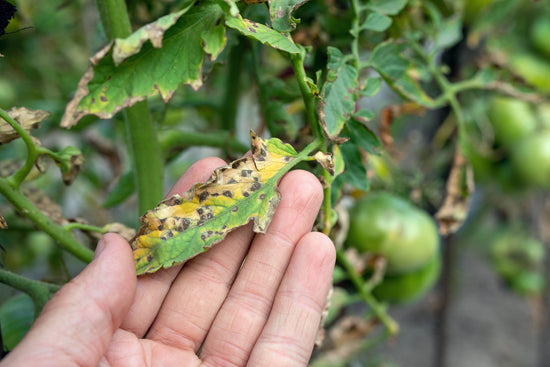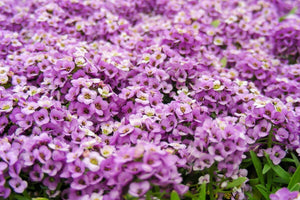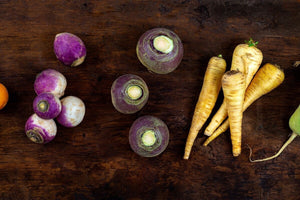Why Blossom End Rot Happens and How to Prevent It
DiseasesBlossom end rot is what it sounds like. The rotting of the blossom end of the fruit. It’s frustrating and disgusting. But once you understand what causes it, you will have the confidence to keep gardening because you’ll know how to prevent and treat it when this common issue appears in your vegetable garden.

If pictures of decaying fruits on the vine have made you panic, don’t worry. Blossom end rot is a common yet preventable issue. It’s not a fungus or disease that spreads, so it’s not as scary as it looks.
What Causes Blossom End Rot?
Blossom end rot is a common issue that affects some of the most popular garden crops, such as tomatoes, peppers, eggplants, and squashes. It's a condition where the fruit's bottom end, or blossom end, becomes discolored, often turning brown or black and becoming sunken in appearance. This can be quite alarming for first-time gardeners, but it's important to understand what causes it and how to prevent it.
Essentially, blossom end rot occurs due to a calcium deficiency in the developing fruit. Calcium is essential for cell wall structure and integrity. When there isn't enough calcium available to the plant, it affects the proper development of the fruit, leading to this rot.
It may be tempting to think you need to add more calcium to your soil. But that’s not necessarily what you need to do. Your soil can have adequate amounts of calcium, but the plant cannot absorb it or get it to the developing fruit for other reasons.
Several factors can contribute to blossom end rot:
1 - Inconsistent watering:
Calcium doesn’t move easily through plants, which is why consistent water is so critical. Fluctuations in soil moisture levels can hinder the plant's ability to absorb calcium, especially during periods of rapid growth. Without consistent amounts of water traveling through the plant cells, calcium can stay in one spot, such as the leaves, which means the fruit isn’t getting calcium for its development.
2 - Imbalanced soil pH:
The optimal soil pH for nutrient absorption is 6.5. If the soil pH is too acidic or too alkaline, it can affect the availability of calcium to the plant roots. So keep your soil within 6.3 to 6.8 for vegetables.
3 - Nutrient imbalances:
Other nutrient deficiencies, such as magnesium or potassium, can indirectly affect calcium uptake. Also, too much nitrogen results in rapid leaf production, which keeps calcium from entering the fruit as it grows.
4 - Root damage:
Damage to the plant's roots, whether from physical injury or disease, can impair its ability to absorb calcium effectively.
5 - Environmental stress:
Extreme temperatures, especially high heat, can disrupt calcium uptake and exacerbate the problem. Cold temperatures can also inhibit nutrient absorption.

How to Prevent Blossom End Rot
Now that we know blossom end rot is a physiological issue, not a disease, how do you prevent it? Preventing blossom end rot involves addressing these underlying causes:
Maintain Consistent Moisture
Water your plants regularly and evenly, avoiding both drought stress and waterlogging. Check to make sure the water is soaking in deep. Too little water means that calcium can’t travel to the developing fruit. If there’s too much water, the roots won’t be able to take in nutrients.
Ensure Proper Soil pH
Test your soil and amend it if necessary to achieve a pH level of around 6.5, which is optimal for most vegetables. Soil pH can’t be adjusted overnight, so test several months before planting.
Provide Adequate Nutrients
It’s good practice to have your soil tested for nutrient composition. This can be done through your local extension office. Use balanced fertilizers and apply them at the right time. Avoid high-nitrogen fertilizers when they aren’t necessary. Follow these tips on fertilizing tomatoes.
Protect plant roots
Damaged roots won’t take up nutrients and water. Handle plants carefully to avoid root damage, and monitor for signs of root diseases. Pull weeds when they are still small and use mulch to keep weeds out.
By addressing these factors and providing optimal growing conditions, you can minimize the risk of blossom end rot and enjoy healthy, blemish-free fruits from your garden.

How do you stop blossom end rot once you notice it?
What if you’ve noticed the signs of blossom end rot on your tomatoes or peppers? Is there anything you can do at this point?
Once you notice the tell-tale dark spots, there is still hope for plants. First, remove the affected fruits immediately. They have already been affected, and the issue can’t be reversed. However, you can now make some changes to affect the fruit that hasn’t started growing yet.
Check your soil nutrients to see if there is enough calcium. You can spray your vegetable plants with calcium chloride, which can help them get calcium quickly. Then, if there is enough calcium in the soil, give your plants regular and deep watering. Having adequate water will help the plant cells move calcium to where it needs to be.
Blossom End Rot FAQs
How do you get rid of blossom end rot?
Consistent watering, applying the proper nutrients at the right time, maintaining the right soil pH, and protecting plant roots can help eliminate blossom end rot.
Can overwatering cause blossom end rot?
Overwatering can be one of the simplest causes of blossom end rot and the easiest to fix.
Can you save a plant with blossom end rot?
The fruit itself cannot be saved, but the plant can be. You can’t reverse blossom end rot on a vegetable, but you can save the plant. Remove the affected fruits and start addressing the underlying causes.
Can cold soil cause blossom end rot?
If your garden soil is consistently below 50ºF, it won’t release nutrients. This is one reason why you should wait until your soil is warm before planting warm-weather crops like tomatoes, peppers, eggplant, and squash.
Now that you know that blossom end rot isn’t as bad as it looks, you can be a confident gardener. Use this checklist to ensure your plants have the water and nutrients they need so that you can prevent blossom end rot.
Written by Beverly Laudie






Leave a comment